This week was technically supposed to be all about water play BUT I had a closer look at the weather forecast for the UK, and while there is meant to be plenty of water this week, a lot of it will be falling down from the sky, rather than splashing from paddling pools and sprinklers. So I went ahead and swapped it for this one, which is more flexible and accessible in multiple weathers.
Can we all keep fingers crossed next week is hot and sunny?
WATCH ME!
Kids at play
Do you ever watch children play? How they get totally engrossed in the action, oblivious to the rest of the world, creating one of their own? How their capacity of joy is simply unexhaustable?
We're dedicating this week to focusing on capturing our children play outside, specifically focusing on the opportunitoes provided by playgrounds, playground equipment and ANY structures that our children may use to play or interact with.
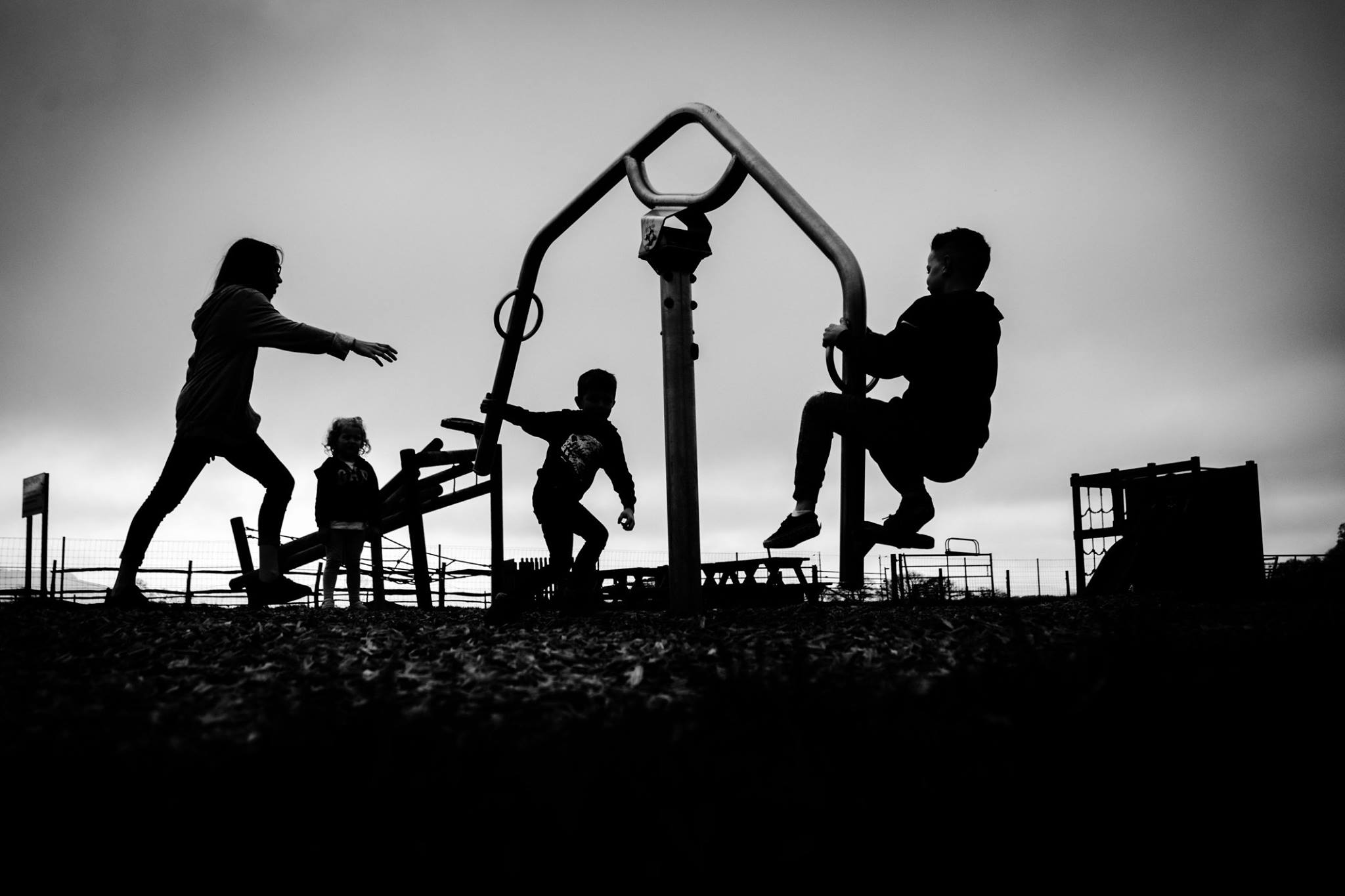
Photo by Lisa Friday
And while we're doing that, we'll be exploring a few different composition principles and pay attention to our shutters ( to make sure we catpture them nice and sharp)
But before we dive in, here is a question I am often asked in the context of children's photography:
Can I take photos of my children at playground, and have other kids in the photo?
I can see where the question may be coming from - we are all very protective of our kids, we are vigilant to any untowards actions by strangers, and we want to give the same courtesy to other people's kids.
But the answer to this question is not a black and white one and there is both a legal side to it and a common sense and politeness side to it.
Let's start with the law
(Just to be clear, this relates to the laws of the UK, if you're reading it elsewhere in the world, other laws may apply.)
When you take photos of your kids, other things and people who are occupying the same public space as you can be legally photographed. There are no laws preventing photography of people, children, buildings, objects or anything else in a public place, or in any place open to the public where photography is not expressly prohibited. There is no expectation of privacy in a public place. There are no separate laws for minors even though some venues, schools and childrens’ sports centres often choose to restrict photography on their grounds or at certain events. It is their right to do, and you must obide by it.
The key word here is Public - people in public can be photographed because being out in public makes theire presence, well, public. As long as you don't harrass anybody or attemp to take photos of kids or other people in private ( which I don't expect you do!) or in any situations that may be considered indecent ( and I absolutely hope that would never be the case for you!), you are within your rights to take the photos.
You also don't technically need anybody's permission to publish said photos - on social media or otherwise, although if you want to sell them, you will definitely require a model release from any person prominently featured in your image ( in case of children, this would fall to their guardians).
In short, if you're taking photos of your kids in the playground and other kids wonder into the shot, you are not in legal trouble, you do not need to hurridly delete them from the card either.
Common Courtesy and Respect
So that's the law, but then there is simple politeness and respectful conduct - and these would dictate that if you are taking photographs at a playground, you should stick to making your own kids the focus of a photograph. I always strive to focus my photos on my children and try to frame my images in a way that either misses out other children or obscures them, or blurs them out. I would also not publish any images where other children in the background are sharp and recognisable. This had never happened to be, but if I were confronted by another parent concerned about their child being in the photographs, I would ALWAYS comply with their requests to delete the photograph even though legely I'm not obliged to - people have many reasons why they are extra protective of the likeness of their children and I would never try to secend guess that or argue.
What if you want to minimise the visibility of other children in the background of your images?
This will vary from photo to photo, in some cases it's easy to remove them even using free editing apps ( Lightroom app which I mentioned earlier has that capability) - the technology really improved here in the last few years. You could also choose to selectively blur them as in the image below ( easy to do in Adobe express) , or crop the photo down to exlude them.
I hope that clarifies some of the many myths and confusion around photos and the public domain. Now that we've cleared all that up, let's think about what you might actually want to photograph!

Kids at a playground - gravity and speed
My daughter's most favourite thing in the world is being on the swings. Something about testing her own gravitational pull at what seems like a break neck speed appears to be all that is needed for pure happiness.
So when you photograph your kids on any of the moving playground equipment, speed is the key word for you.
More specifically - your Shutter speed.
If you're unfamiliar with the term, it's essentially the time it takes your camera to fill its sensor with light and take the photo. Fast shutter speed means you take the photo faster, the camera is most likely to freeze the movent sharp. This is what you want when it comes to catching your child run, jump, twirl, scoot etc really sharp - freezing them in motion. Slow shutter speeds have a different effect on your subject - with slow shutter speed, the camera takes longer to record a photograph, so it also records any movement that occurs in that time.
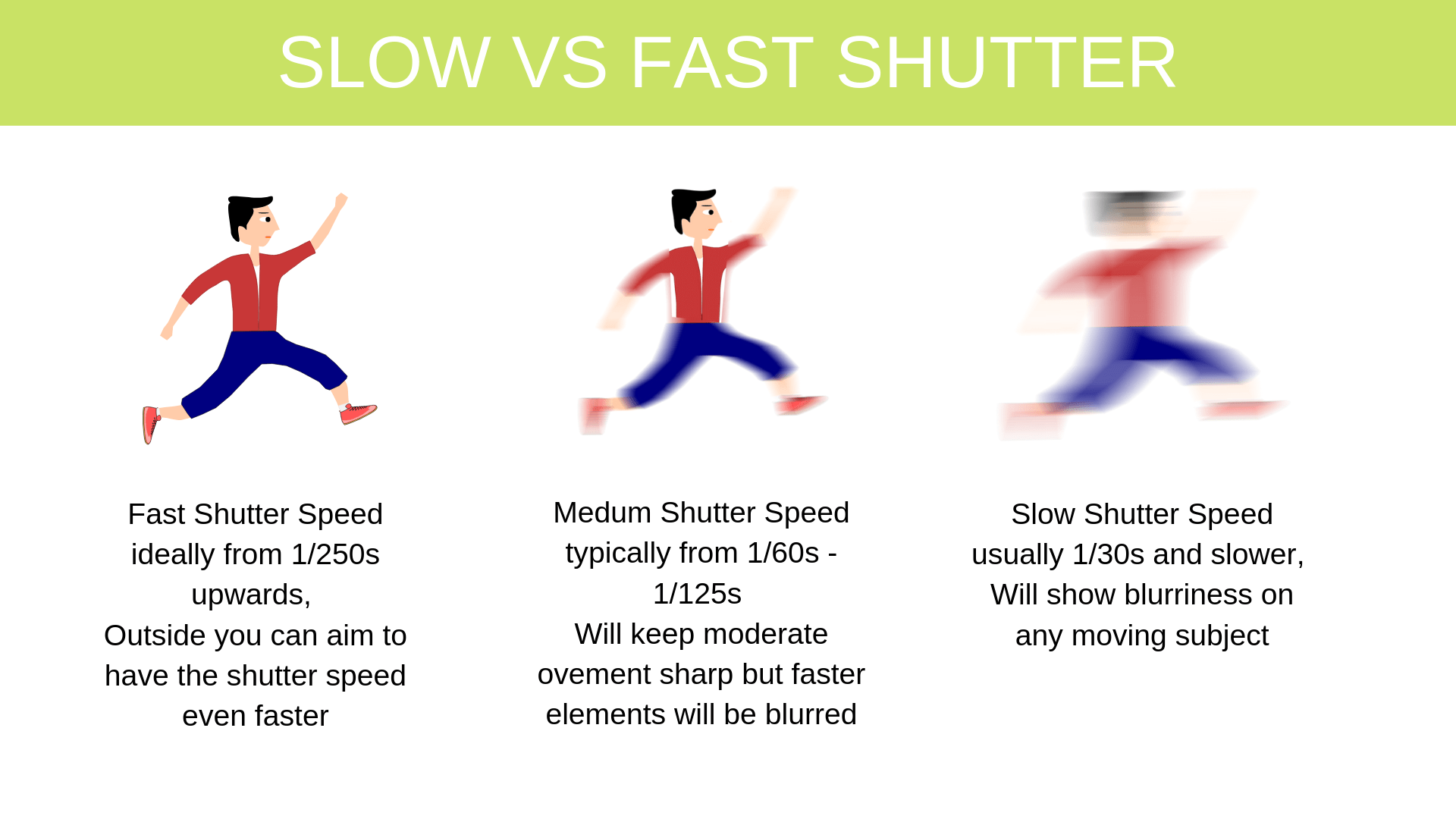
We would class fast shutter speed as being usually above 1/250s ( that's fractions of a second) but higher is even better for capturing movement - most cameras will go as fast as 1/2000s or even 1/4000s. I normally go for a shutter speed of 1/500s = 1/1000 when I want to photograph kids on swings or similar so if you know what you're doing with your camera (shooting in Priority or Manual modes), I'd recommend those settings.
But if you only shoot in auto or on your phone, I have some good news for you:
As long as you're trying to capture your kids OUTSIDE on a reasonably BRIGHT DAY - there is a high chance that your camera will adopt a fast shutter speed even on full auto. The reason for this is that shutter speed is intrinsincally linked to the amount of light you have so plenty of light nearly always equals fast shutter.
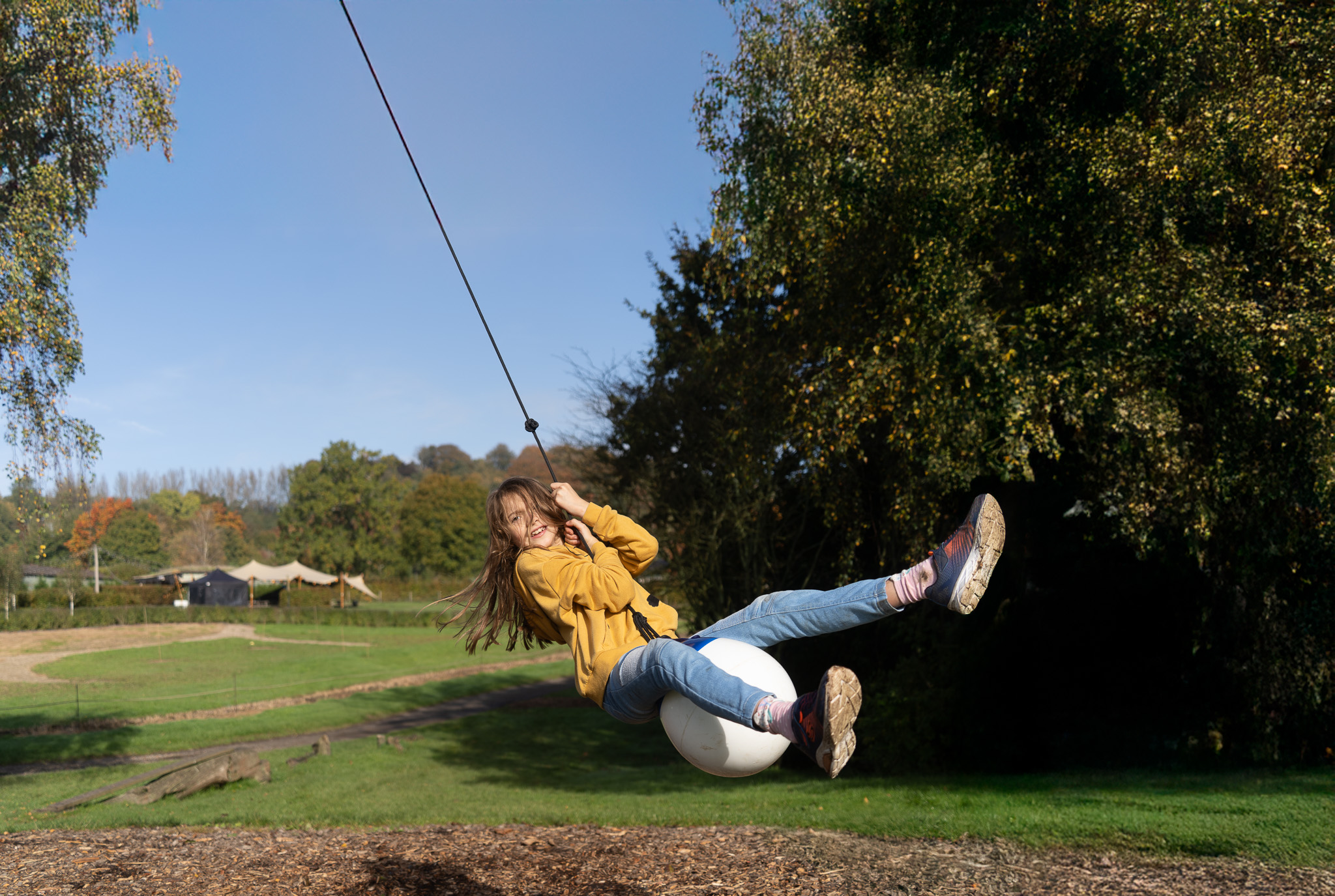
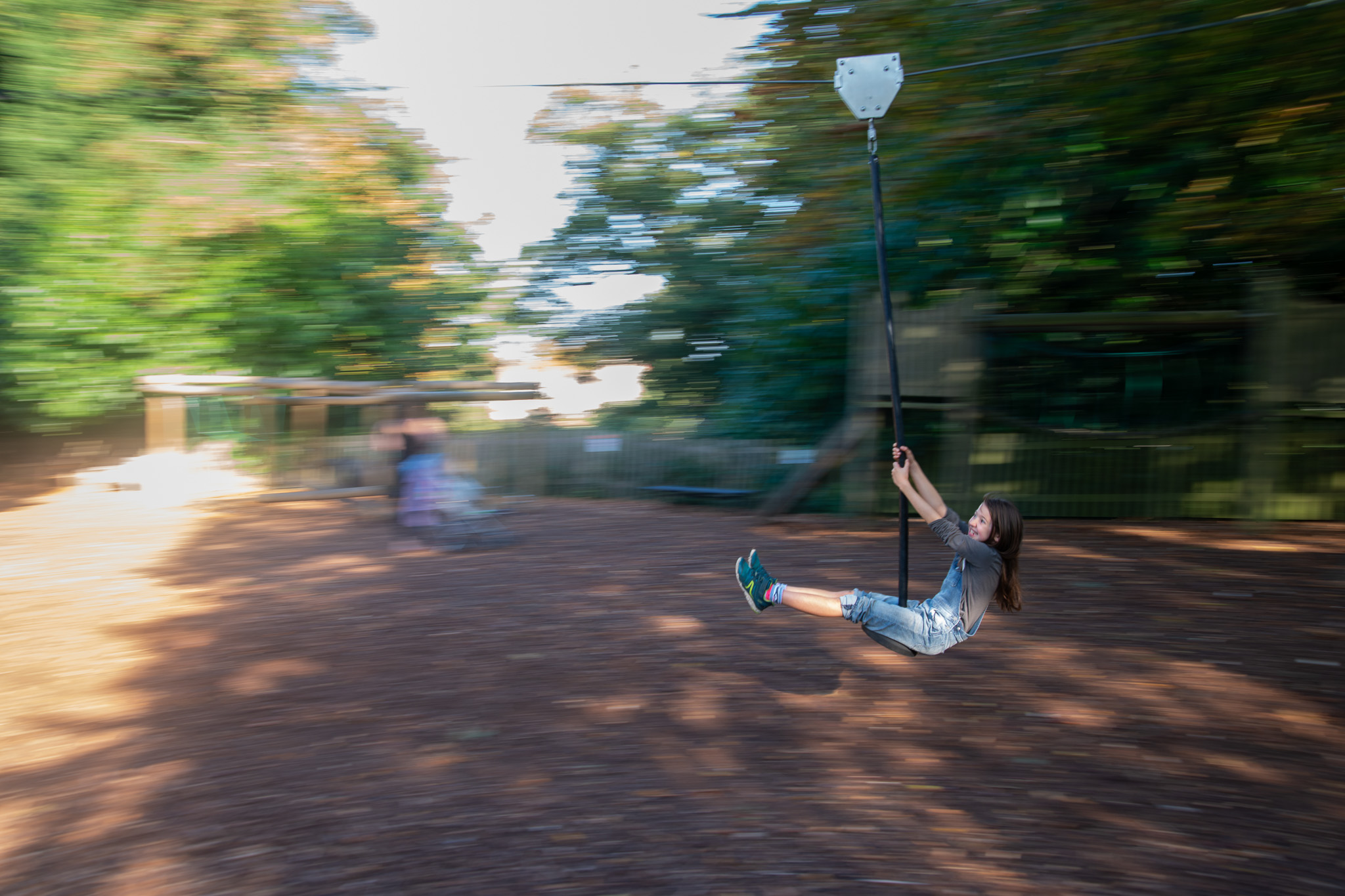
But the difficulty with capturing movement is not only about doing it fast enough. Ats also about having your camera focus at speed in the right place.
Focus for Movement
Most, if not all cameras these days have a dynamic focus mode which is capable of tracking your subject movement. It will have different names in different camera brands - typically AI-Servo ( Canons) , AF-C or Continuous, or Tracking on other camera brands. There is not enough space here tofully explore it ( we dedicate a good chunk of our Fundamentals course to exploring and practicing focus) but just know this - by setting your focus on that setting, you will be telling the camera to 'attach' itself to your subject and follow its movement, thus giving you more opportunity to actually capture your child in motion SHARP.What Should We Capture When Photographing Kids at Play?
When we set out to photograph children playing, it’s easy to focus on what they’re doing - the game, the jump, the splash. But if we want to create images that feel like childhood, not just document it, we need to go deeper. The best play photos go beyond action.
Here are three essential layers to look for when photographing play : the what, the how, and the why it matters.
1. Kids in Their Own World
Children are naturally immersive creatures. When they play, they step into imagined landscapes, private logic, secret missions. They build forts, invent rules, narrate aloud to no one. This is where their magic lives and our job as photographers is not to interrupt it.
So don’t call their name. Don’t ask them to smile. Don’t ask them to look up.
Instead: observe. Let the play unfold.
Position yourself at a respectful distance. Frame with care, but don’t direct. Think like a documentarian. The difference will show. If you interrupt, make it a meaningful one - have them show you what they found, how they're doing something - don't just make them look up and smile!
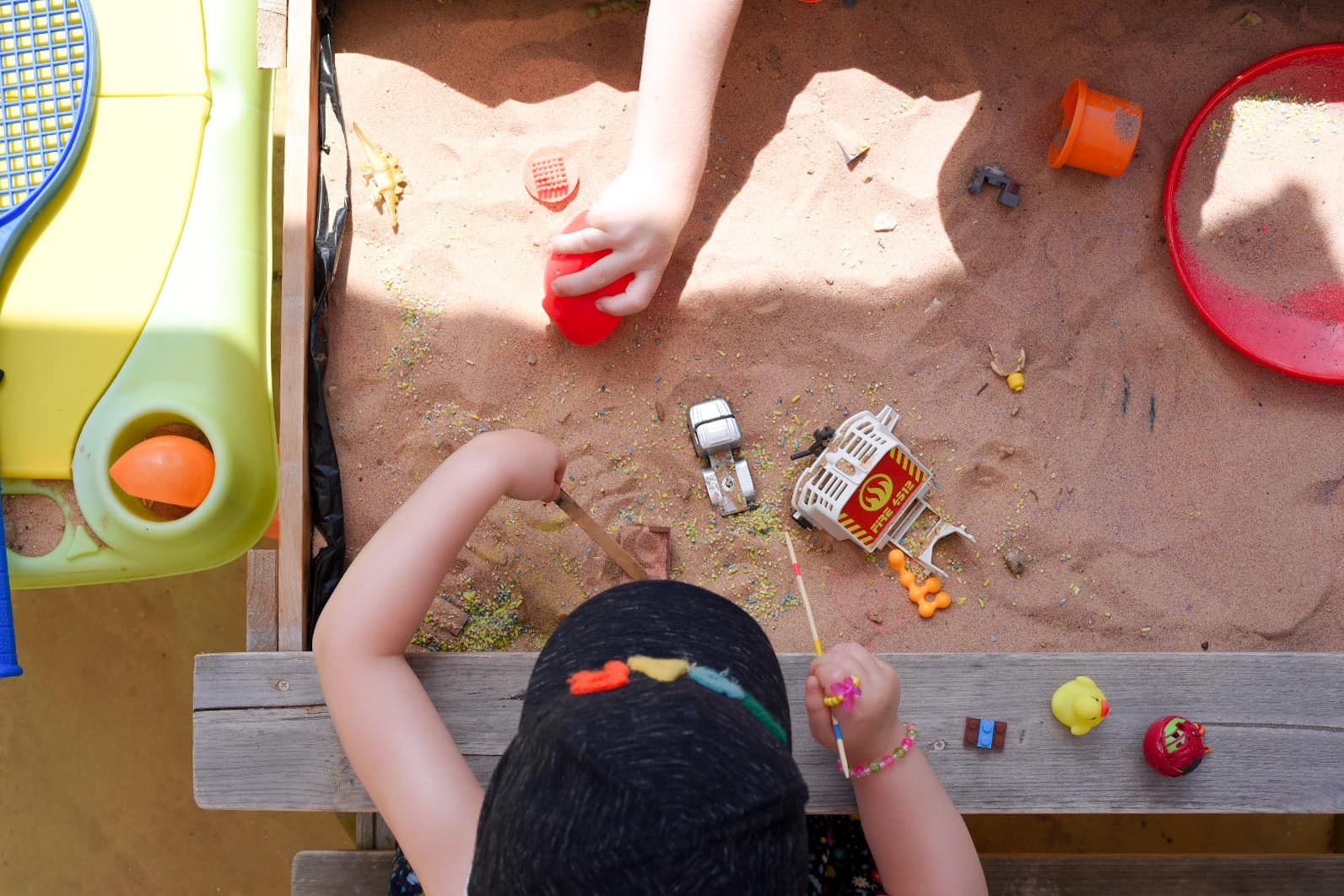
2. Reactions and Emotion
Don’t just photograph what your child is doing. Ask yourself: how does it make them feel? Is it belly-laughing chaos? Concentration? Quiet pride? Silly joy?
You can show this in their:
- Facial expressions - grins, scrunched noses, tongues out in focus
- Body language - arms flung wide, tiptoes, relaxed shoulders
- Interactions - who are they playing with? Is there connection, rivalry, teamwork?
Sometimes, the most powerful shot isn’t of the game itself - it’s the reaction to it. The giggle under the bucket. The gasp when they fly higher than expected on a swing, The pride at climbing hight, the abandon at being swung round and round on a merry-go-round!
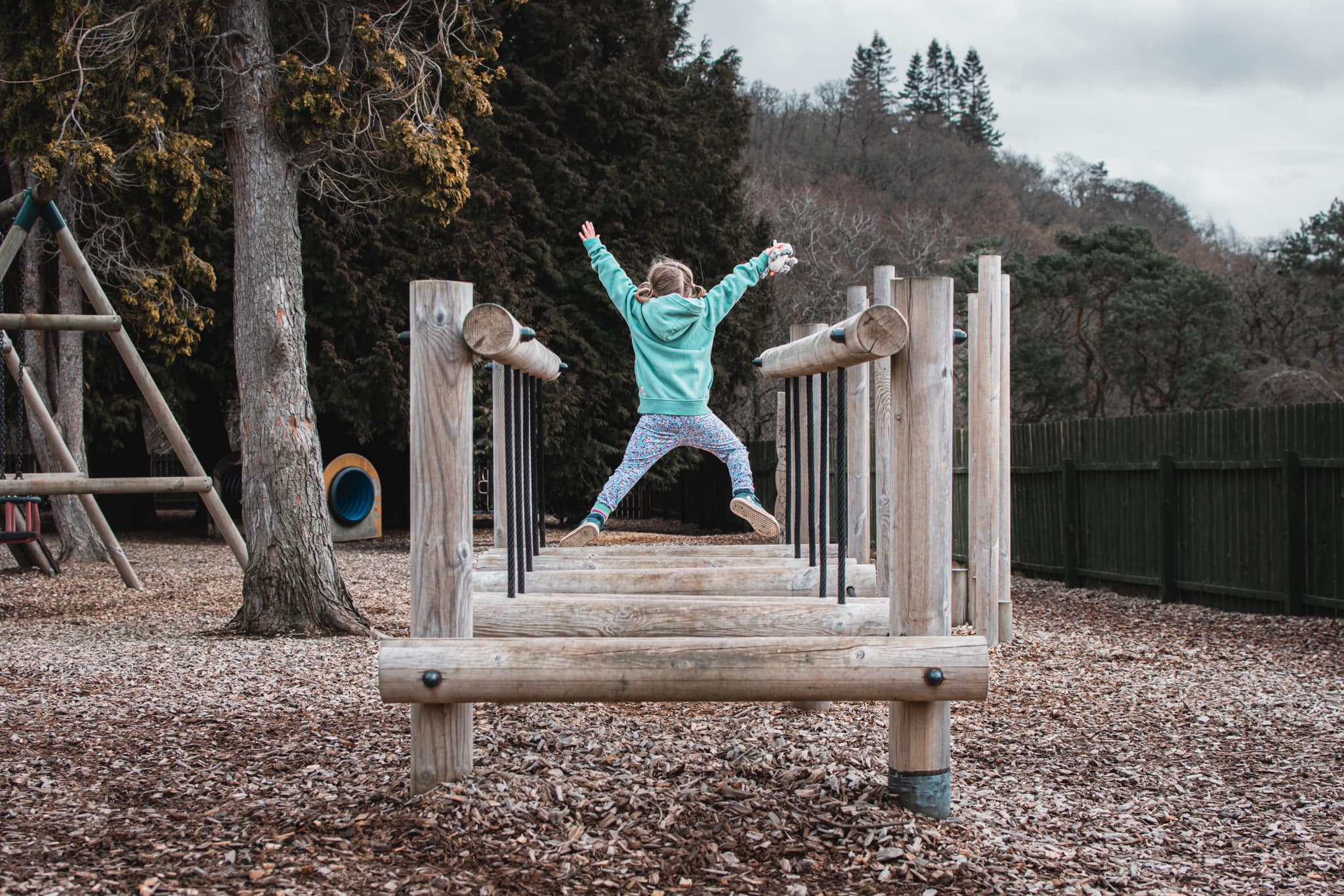
3. A Storytelling Approach: Big Picture and Details
Finally, zoom out - and zoom in. Great play stories are told in layers.
- First, capture the big picture: Where are they? What’s the setting? What’s the scale? Show us the garden, the sofa fort, the muddy patch under the tree. This gives context - the where of the story.
- Then, move in for the medium shots: The full-body view, the group of siblings, the toy in hand, the action. These frames answer the what.
- And finally, don’t forget the details: The dirt under their fingernails. The legs scaling the rungs of the climbing frame.
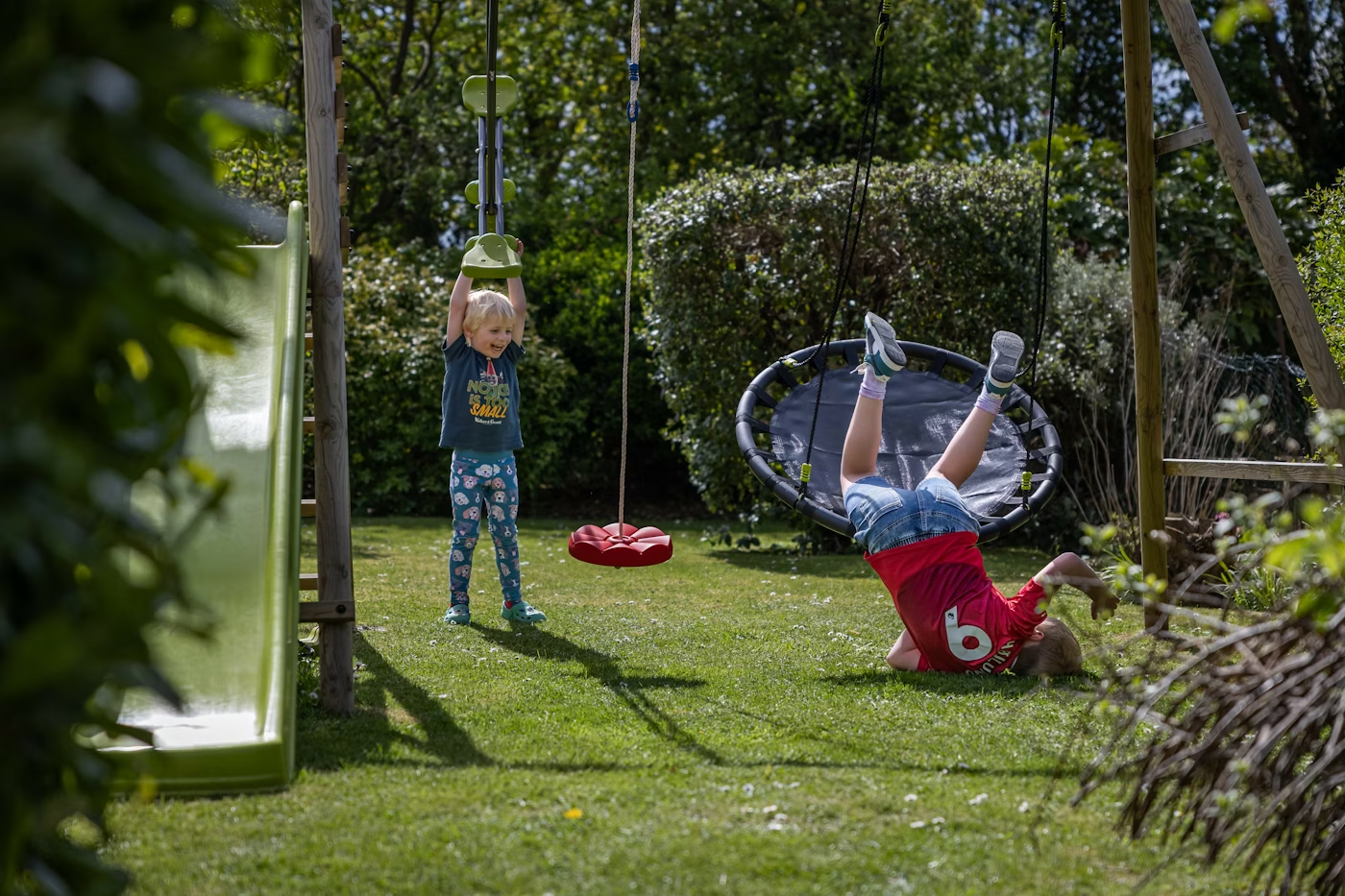
HOW TO CAPTURE KIDS AT PLAY ON A PLAYGROUND
Swings
Show me a person who goes on a swing and doesn't feel even a little but elated? For an action so pure, it is so full of joy!
But for something so joyful, it is actually surprisingly technical to capture.
On a technical side, you need to make sure your shutter speed speed is fast enough - like I said, if you're out on a bright day, you should be fine without messing around with your settings too much. In any case, we don't have space to go into details on those in this course.
Bit there are two things that I would do:
- I would switch to continuous focus (AF-C, Al Servo) - with constant movement like that, this will make it so much more likely that you'll capture your subjects in sharp focus
- And I would turn on photo burst ( where you take multiple photos in one go ) - it's typically called Burst on your phone and some cameras and Drive mode on others.
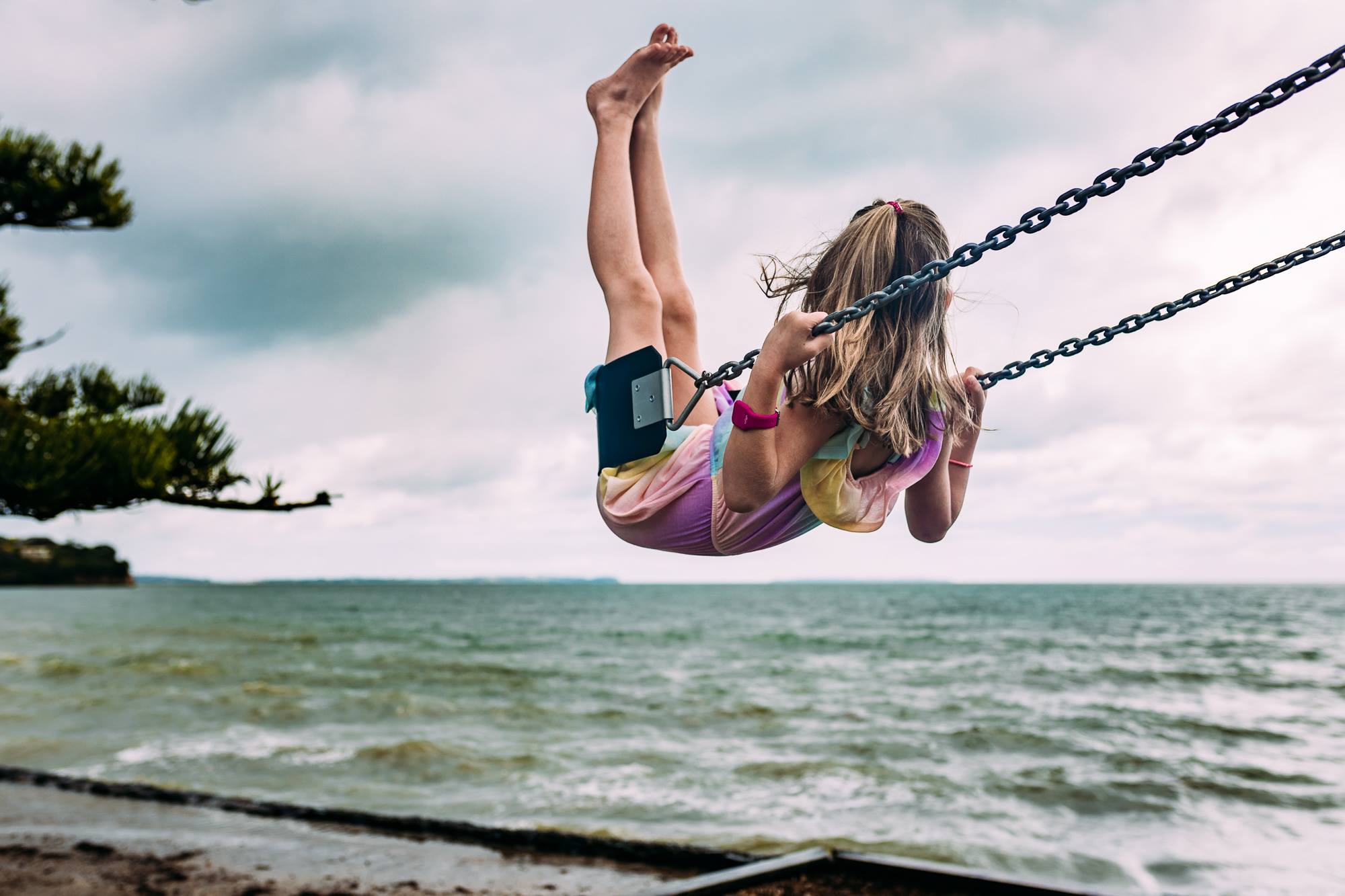
Photo by Andrea James
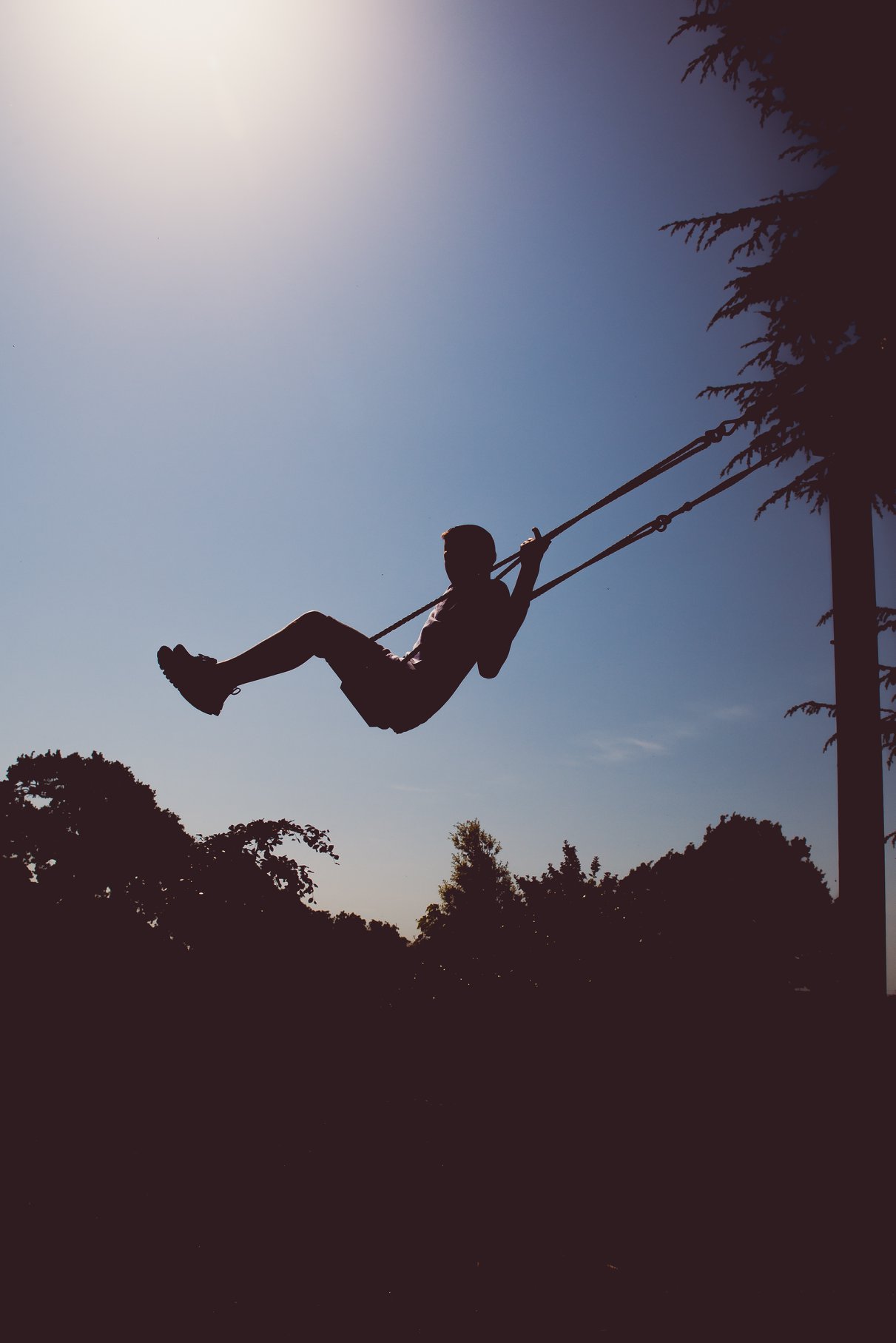
Photo by Teresa Foyster
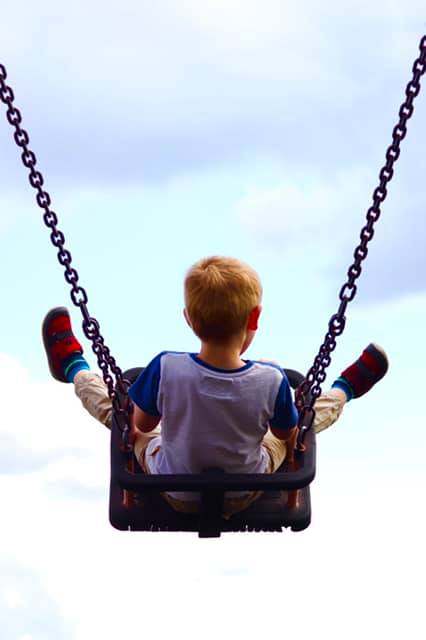
Photo by Jemma Pincott
On the composition side :
Give it enough space!
Think about the direction of this movement ahead of you and anticipate how much space you will need to that you don't end up with your subject flying out of the frame or having limbs chopped off ( in the frame! No surgery here!). I cannot tell you how many photos I've seen that could have been great, had the person anticipated quite how far the movement will go and paid attention to framing the cwing.
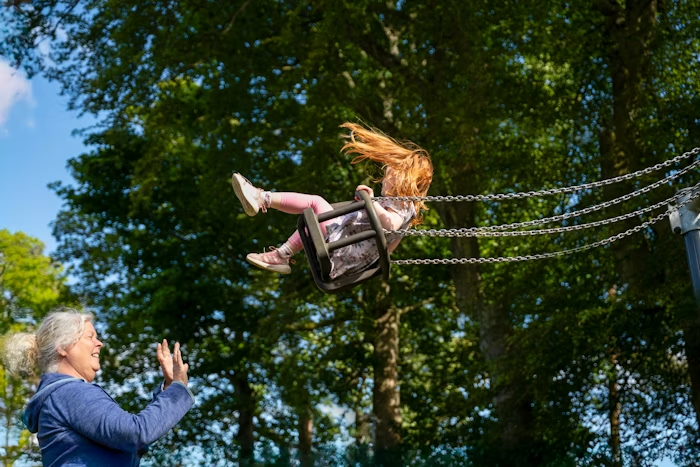
Let's talk about angles:
There are so many ways of photographing kids on the swings, yet I usually see just one angle - that taken from an adult standing height, facing the child on the swing. I get it, your child is joyous and smiling and reaching out to you. The photos will be really cute. You should take them. But you should also take at least 3-4-7 other ones!
Go really low, and I mean on your back on the ground, shooting up - DON'T GET HIT BY THE SWING!
Go from the side - play with the placement in the frame or try some more creative crops
Go from behind or above to catch an unusual angle.
Focus on their face or their feet for a different story
Let me be clear, there will be plenty of out takes and missed focus and odd crops, but some gems as well. The key is to keep things fun for everyone and shoot loads.
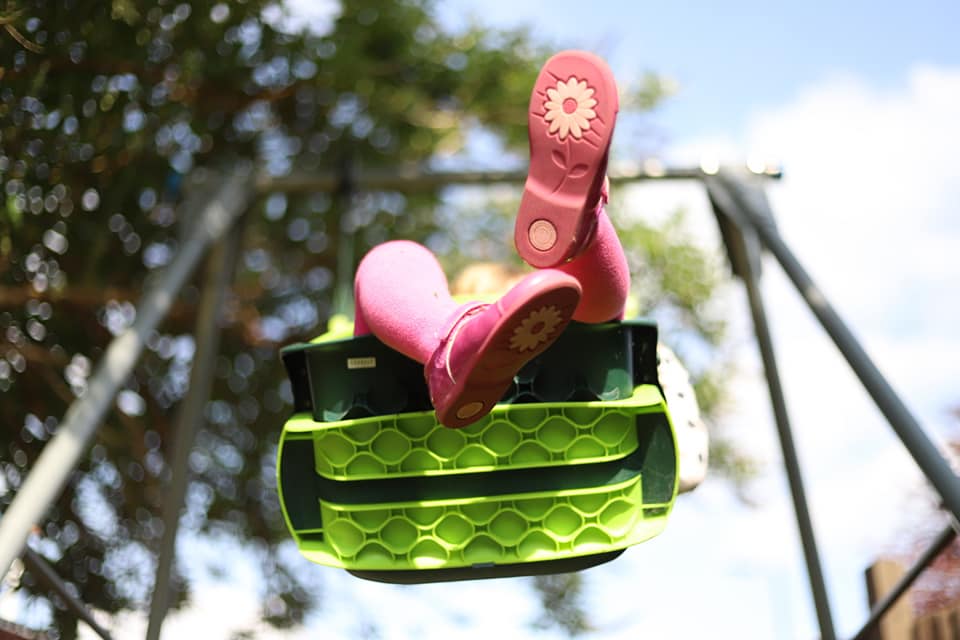
Photo by Lisa Lloyd
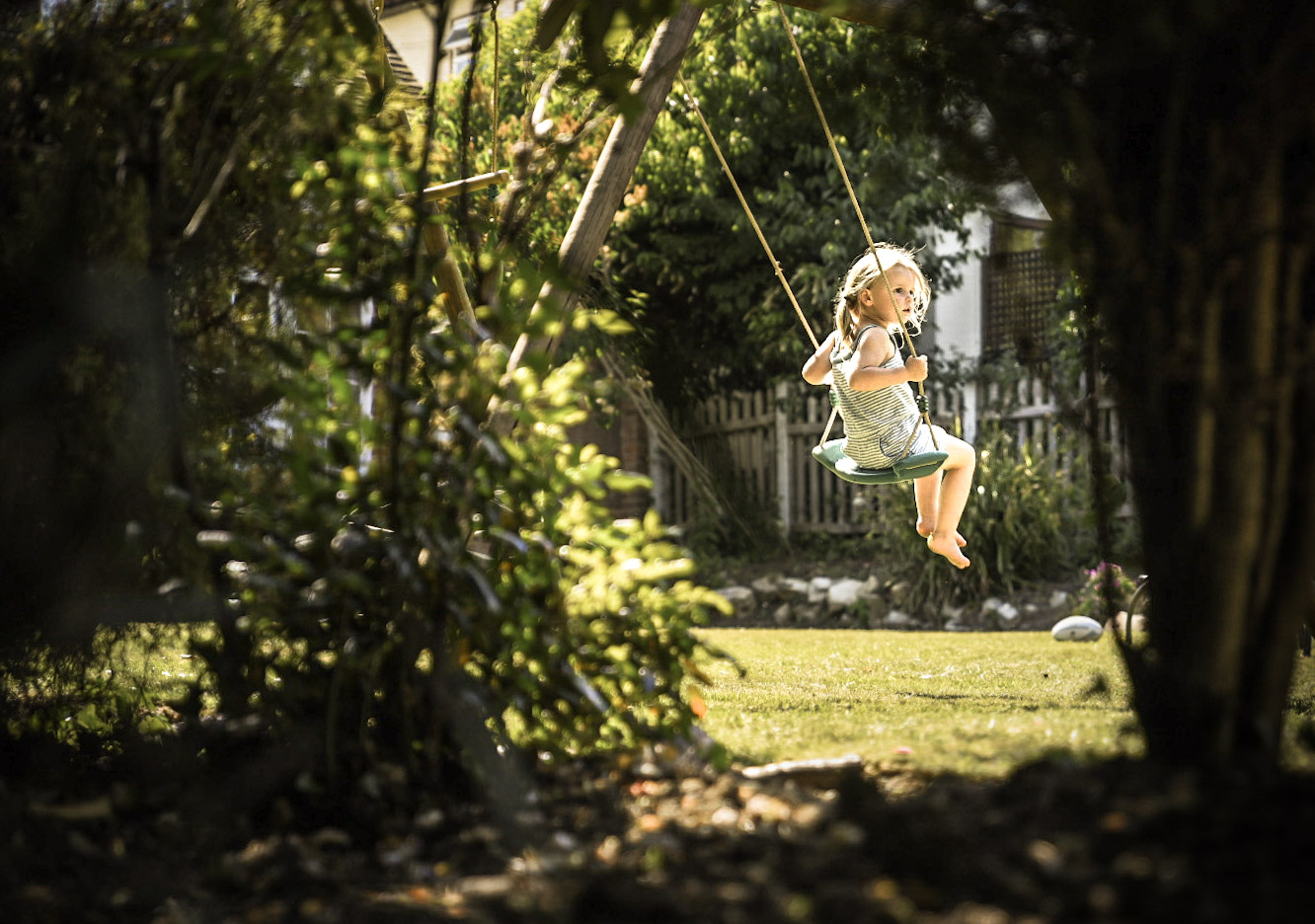
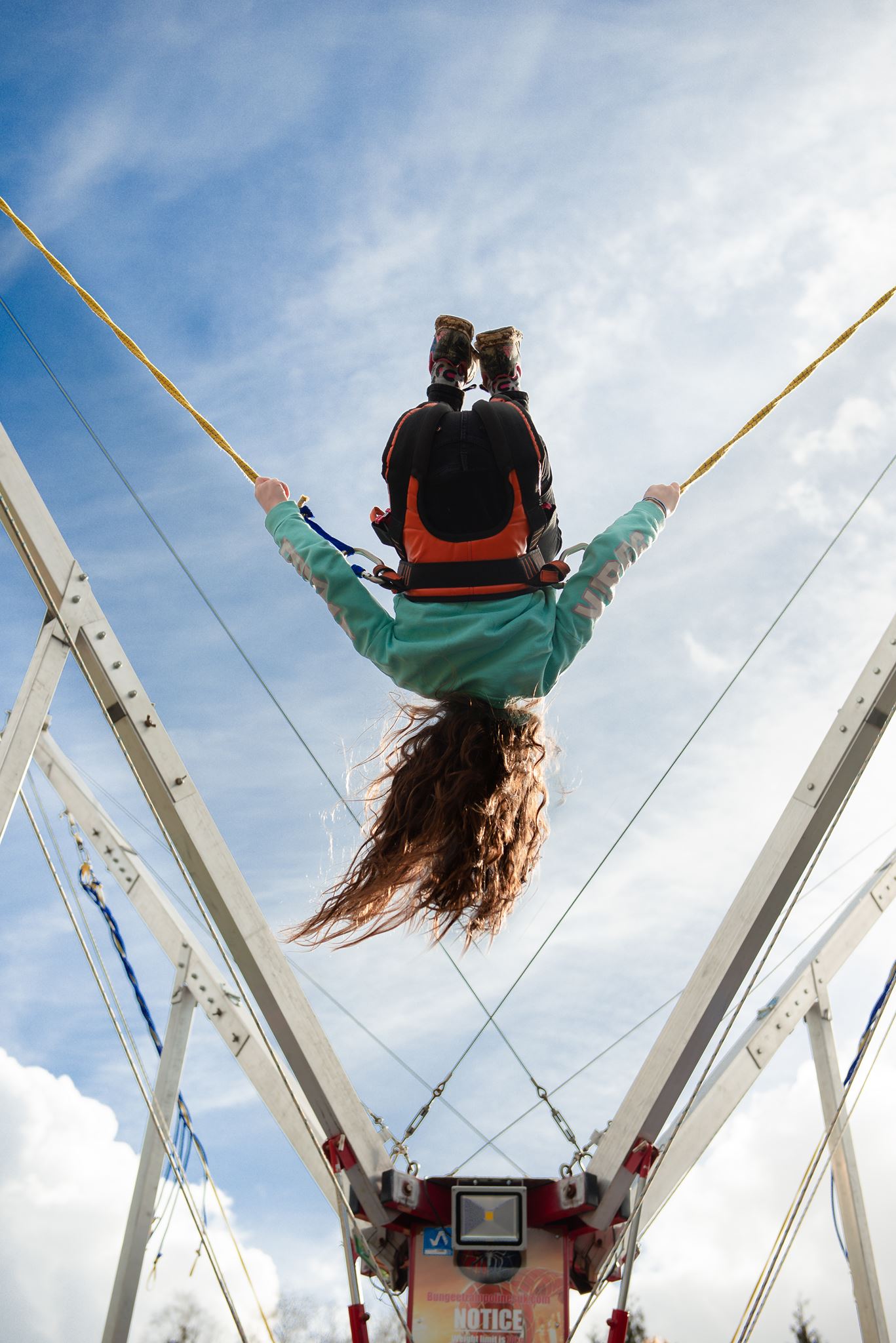
Photo by Estelle Gibbs
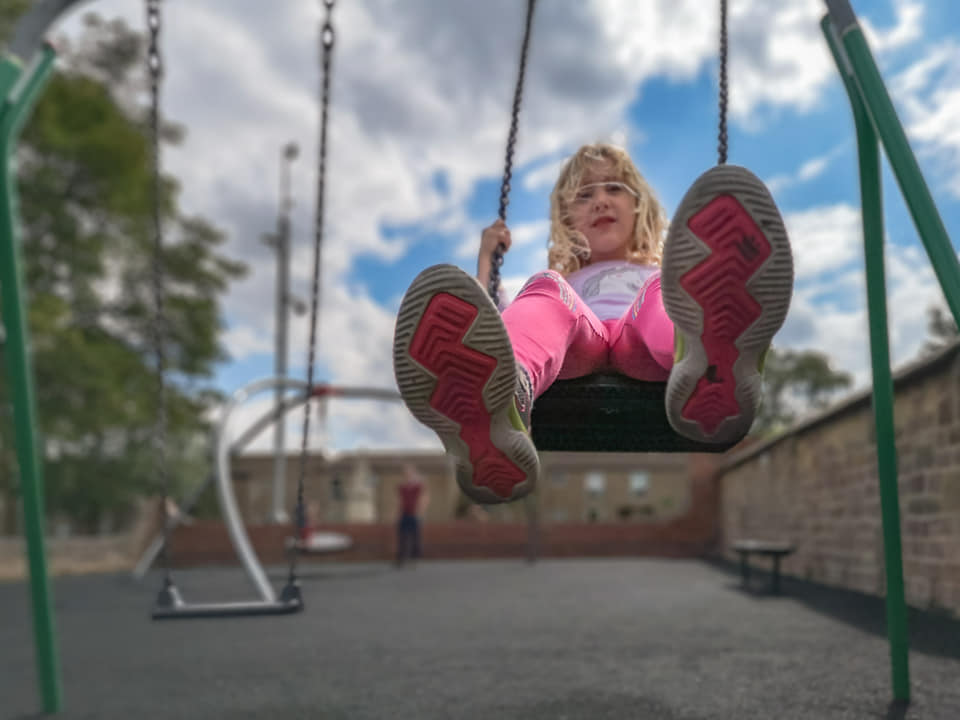
Photo by Morgan Wallace
Roundabouts / Merry-go-rounds
From swings, to roundabouts. Another fantastic way for the kids to feel the speed and how their movement affects their bodies all in one.
If you want to catch movement sharp, the same principles as with swing shots apply - fast shutter speed and continuous/tracking focus.
I'd again highly recommend that you play with angles and crops to shoot something unique - shorten your focal length and shoot from above, catch a part of their body only
But if you're up for something a little more technical, here is a fun little technique which makes it appear that the background is moving while the person in the roundabout is completely still.
Here is how this works:

Photo by Sarah Collins
Slides
With slides, it's all about the angles.
If you want to emphasize the height and length of the slide, shoot from very low down, pointing your camera up. If you use a shorter focal length, you can actually MAKE the slide longer and large, due to the lens's quality of extending the space.
Crop tighter if you want to focus on your subjects' expression - but make sure there is still enough in the background to make it clear where your child is.
If it's a metal slide your child is on, use its reflective qualities to either help bring more light onto your subject's face, or just have fun with reflections
Get creative with crops and aim to capture just a small part of your child - like the feet as they're about to come out of it. Walk around the slide or shoot from above - I cannot emphasize enough how important it is to try and vary your angles and directions. So many people give us after taking just the simple, most predictable shot and then putting the camera away without looking from the other side!
Be differerent, have a little fun with it!
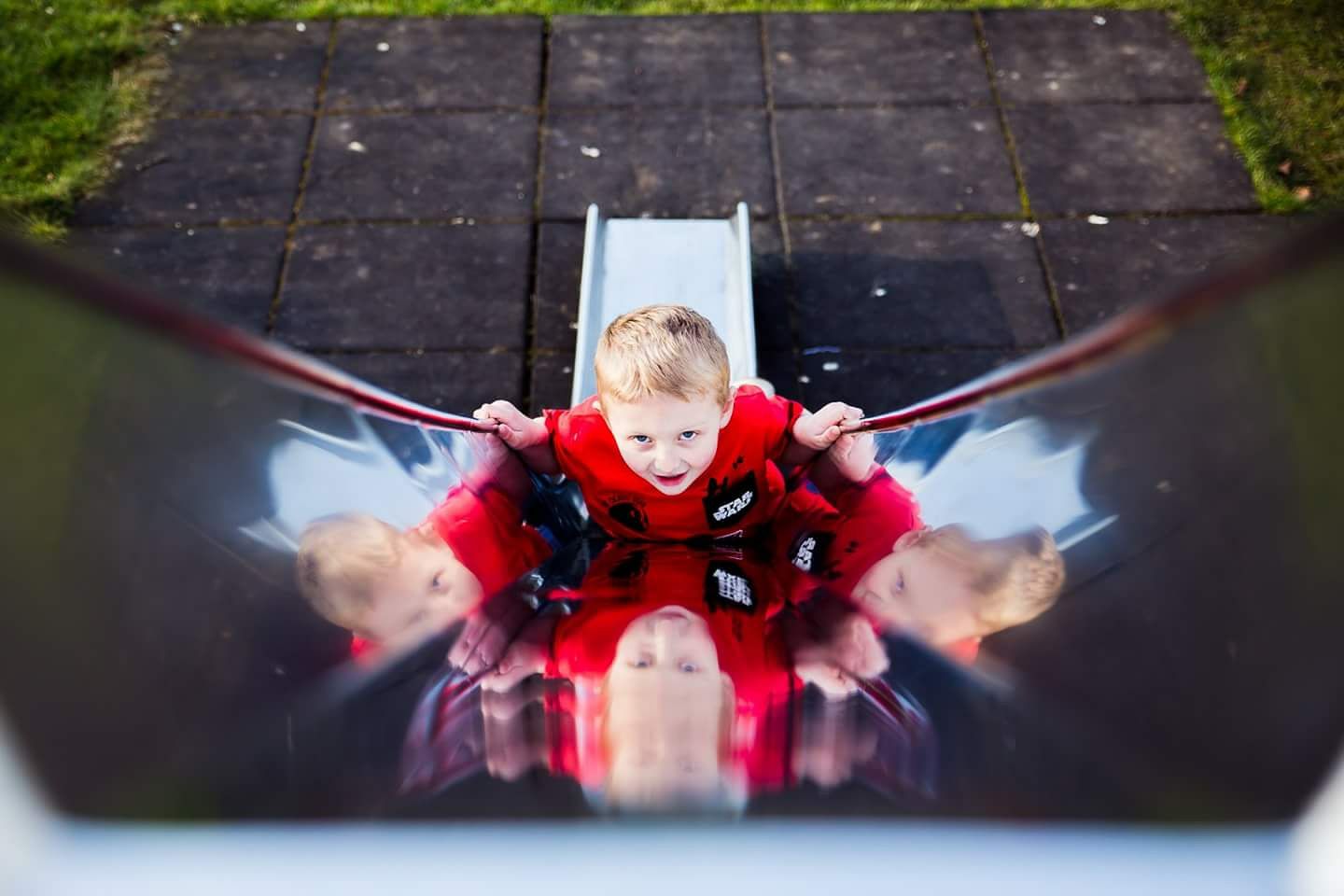
Photo by Teresa Foyster
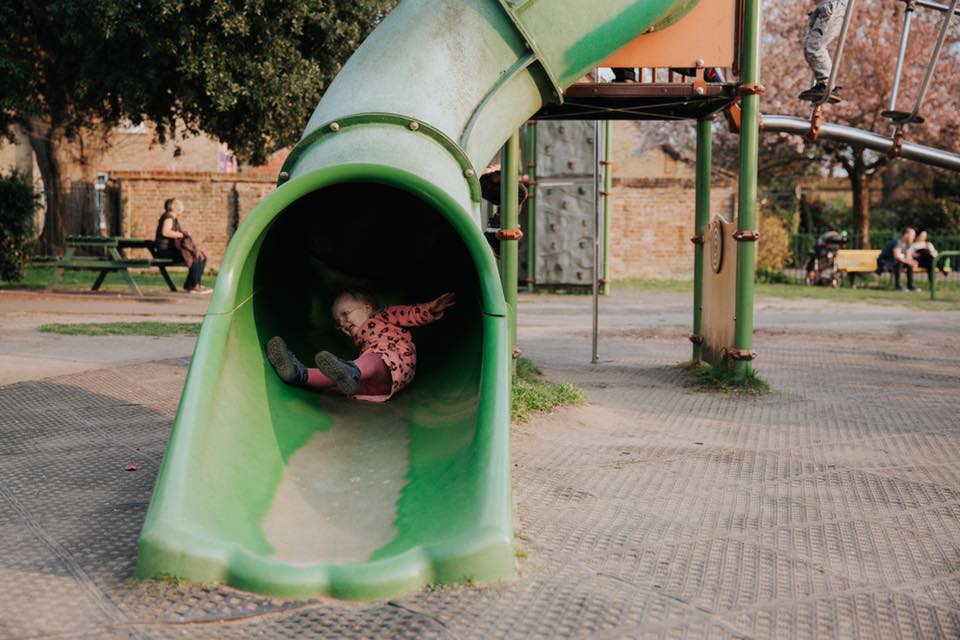
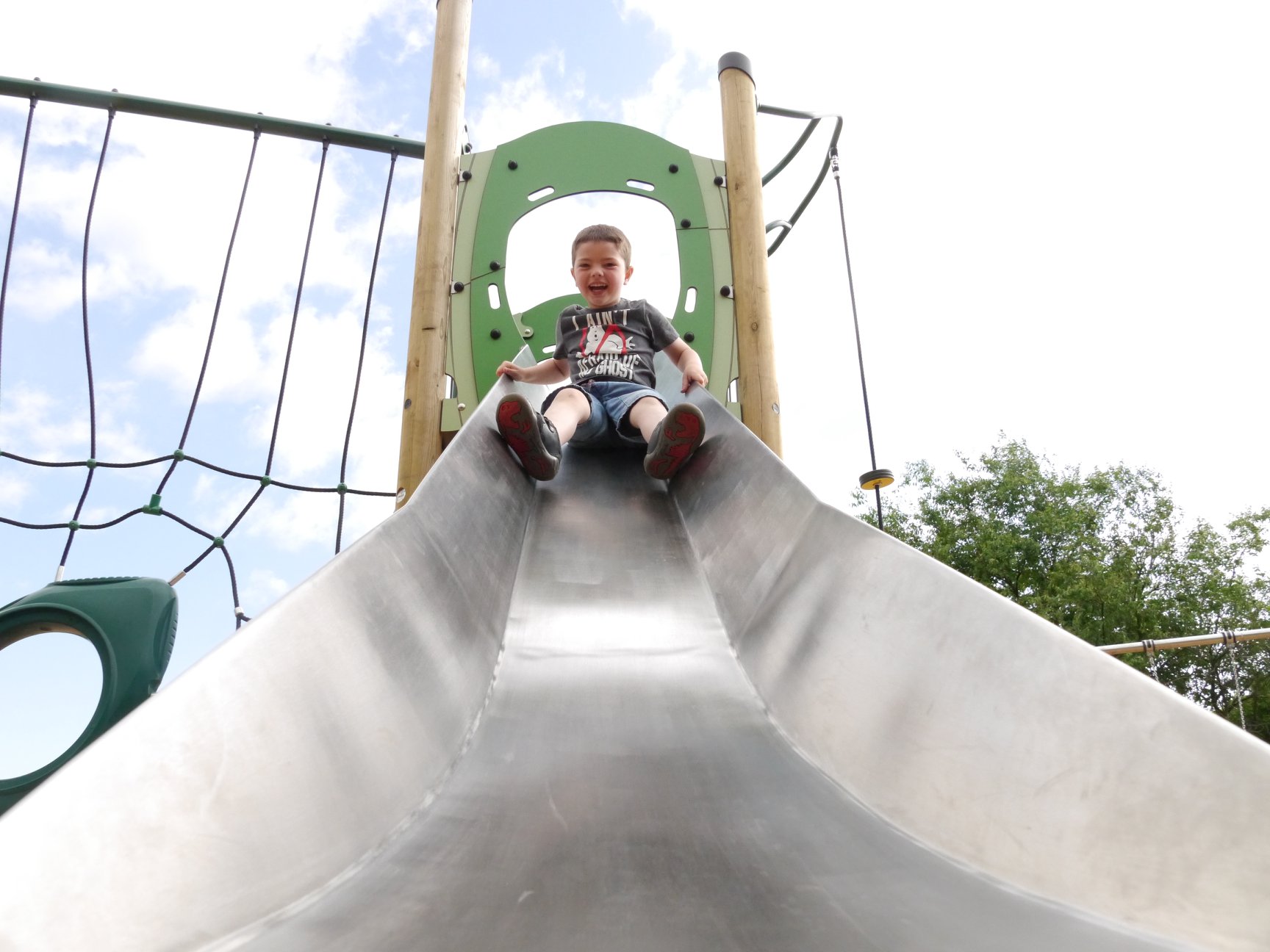
Climbing structures
Here is the question - how do you show height in an image? How do you depict the perlious heights your kids climb to when you prefer to not look so as not to get a heart attack and run to their aid?
Broadly speaking, you have 2 approaches:
You either show the height or you imply it.
Show the height:
If you want to show that your child is indeed quite high up, you make sure that you show the ground so that the viewer can appreciate how high the subject is. This will require you to go a bit wider with your framing.
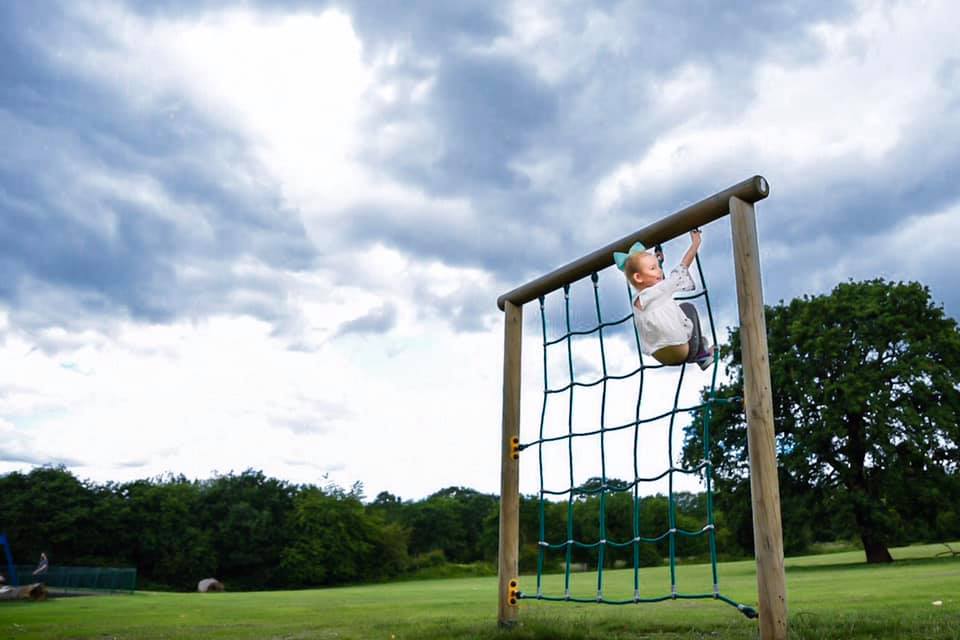
Photo By Aoife Crawford-Bonner
Imply the height
The other option is to imply the height - our brains are very good at filling in the blanks of what we do not see. So If you see something that looks like it 'might' be quite high, and nothing else contradiscts it, and especially if you use upward pointing camera angles ( we're remembering our ants view) - you can make it look like your child is scaling untold heights, when they're actually barely above ground.
This looks like they're high up...
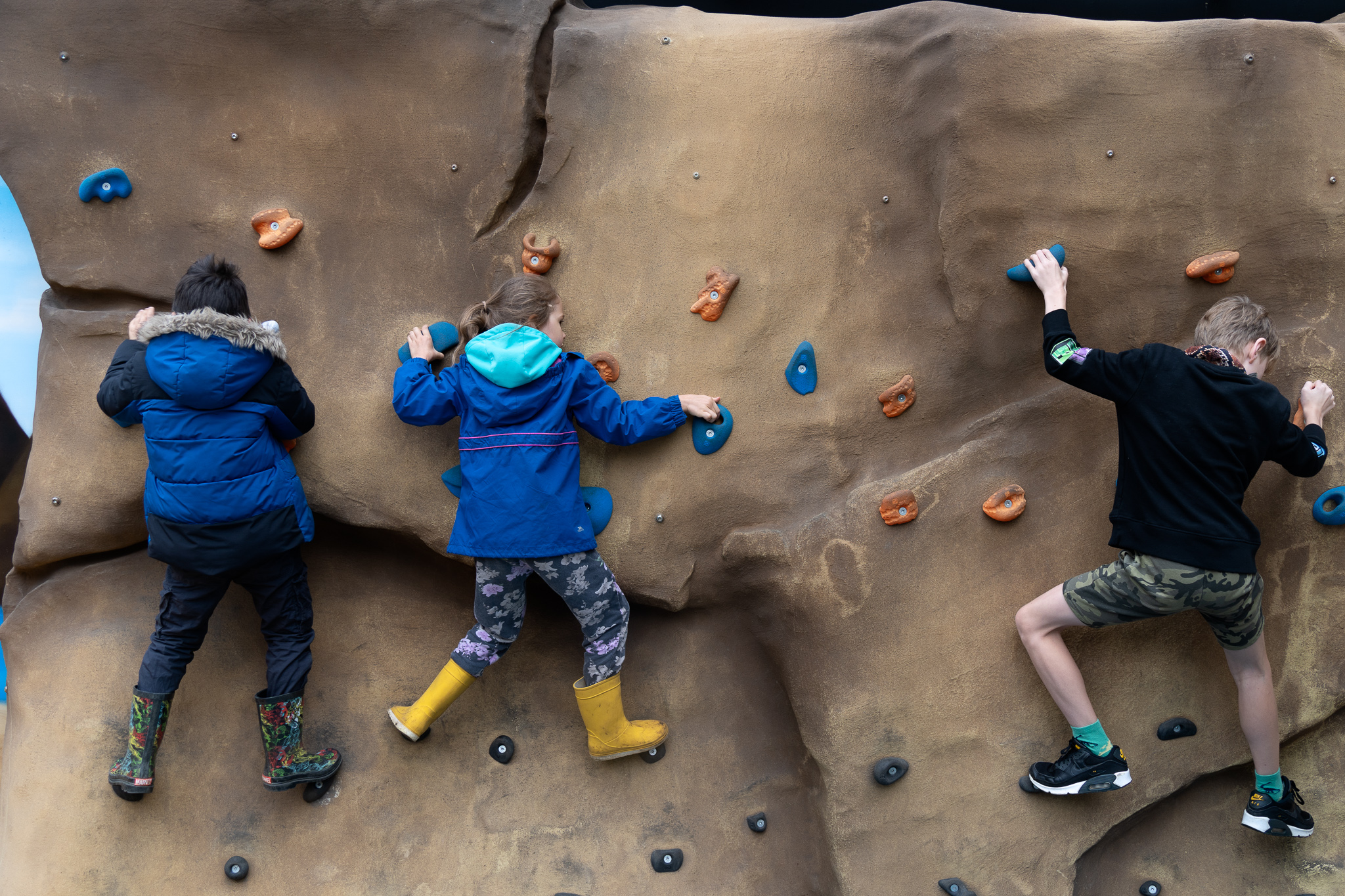
the reality...
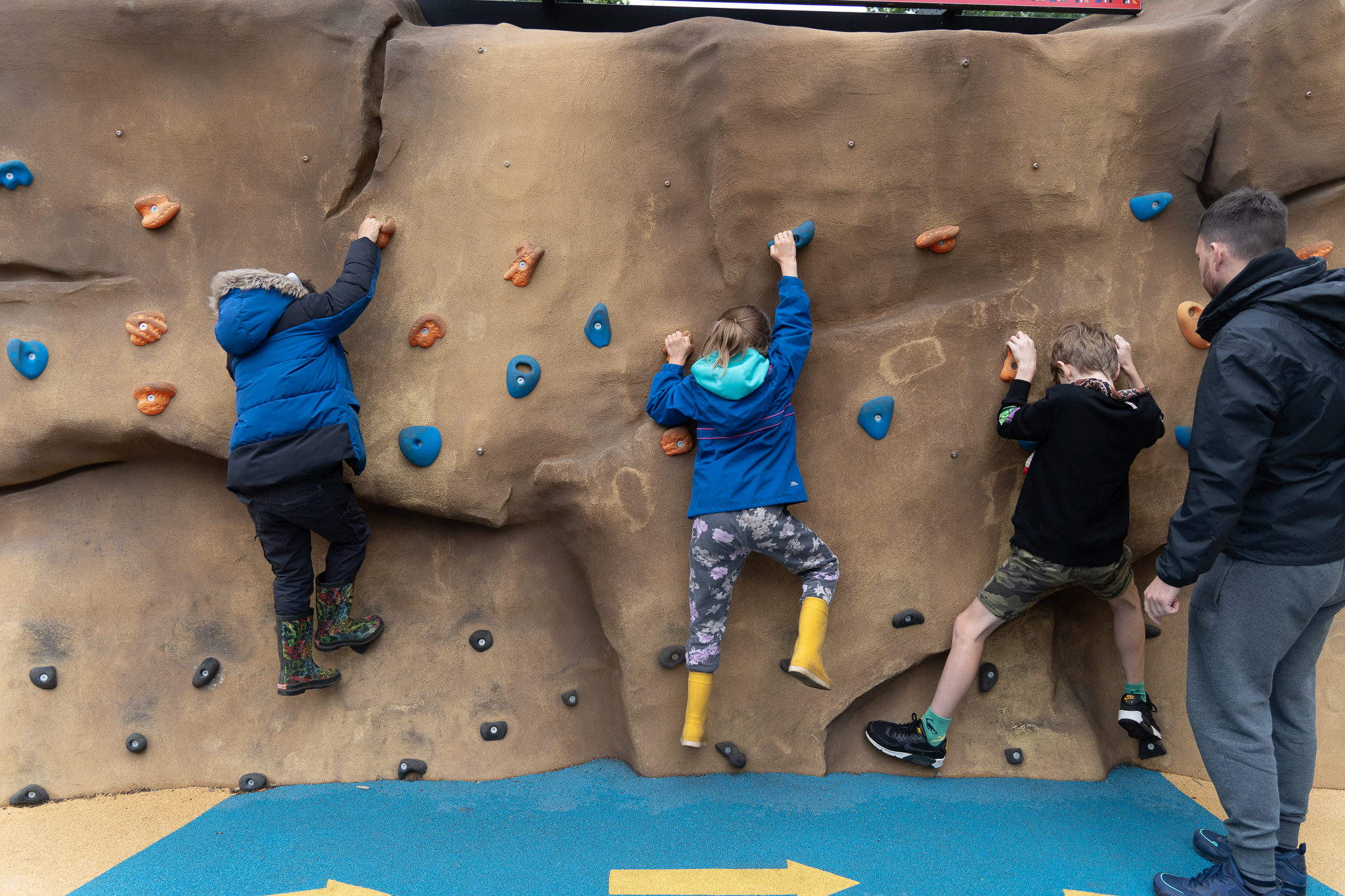
Here is what you do NOT do - zoom in too much. If you cut your child our from all context and just show them clinging to a rope net, it doesnt tell the viewer anything about whether it was hight or perched on the ground. This can make a great photo anyway - we talked about usining various things to frame your child, but it does not show them climbing up.
Using wide angle lenses ( when you have minimal to no zoom) will also help additionally 'stretch' that perceived space.
Placing your subject in the top third part of the frame can often work as well as the visual proportions will help foster the sense of height.
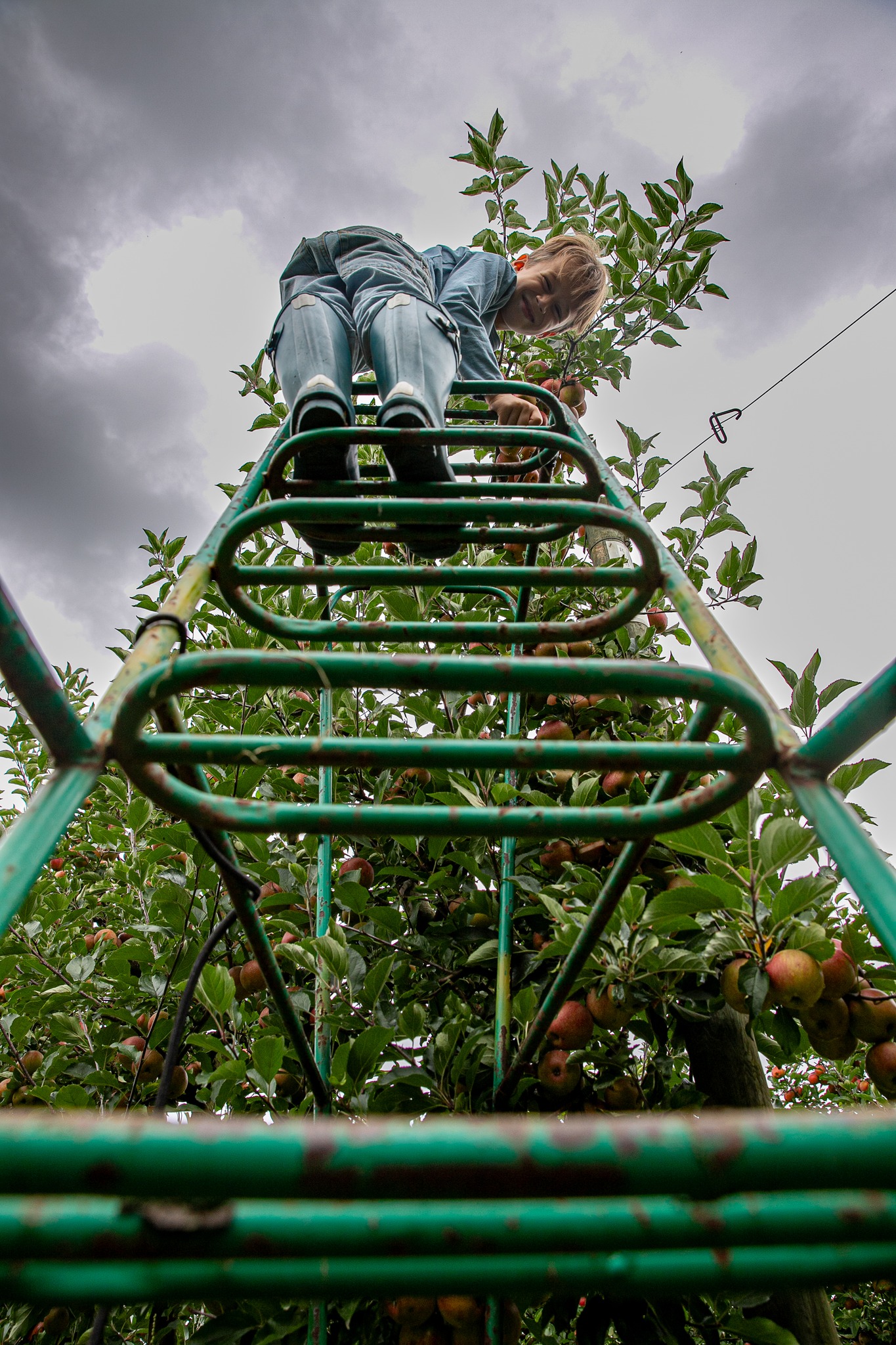
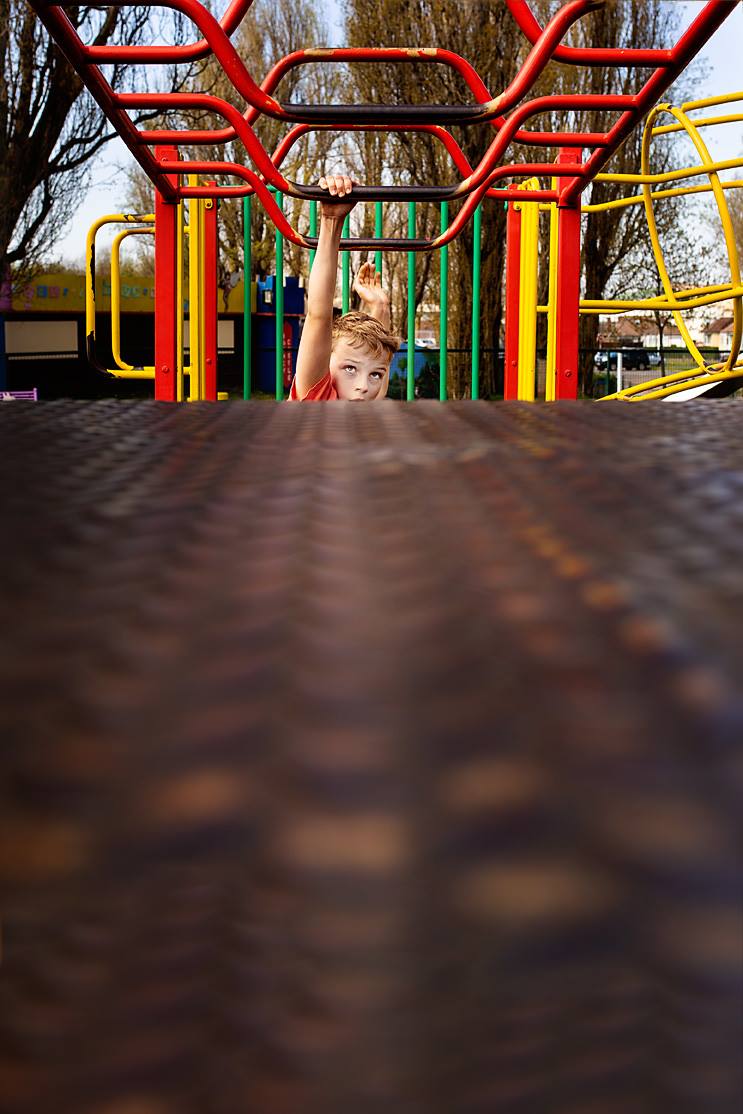
Photo by Lisa Friday
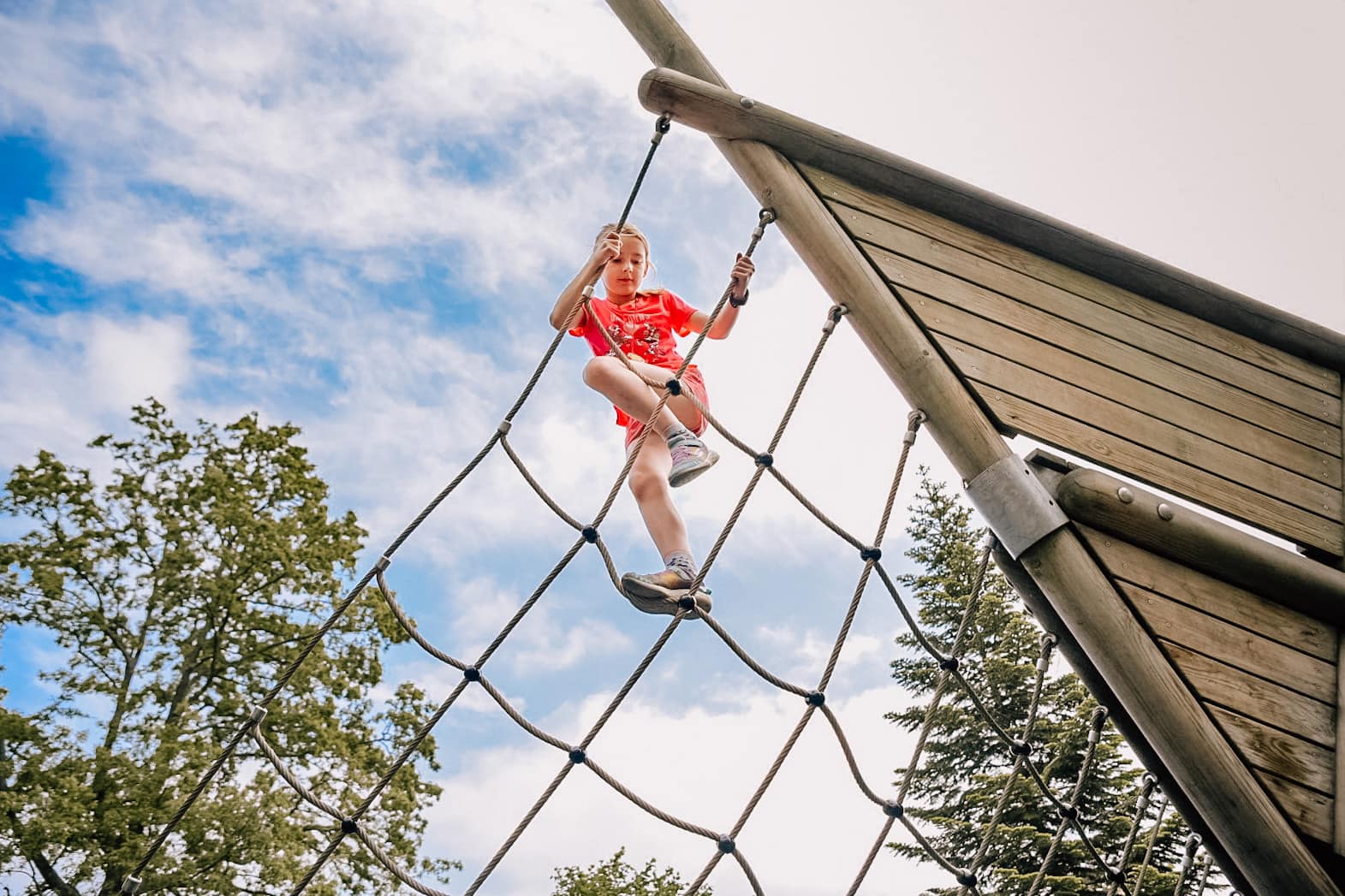
Want more advice on how to capture your kids at play?
Check out our Photoparents Guides !
20 long form PDF guides + pocket versions that cover all kinds of things your kids get up to in the summer and beyond! Now as part of our Birthday sale - from only £9.99 per set!
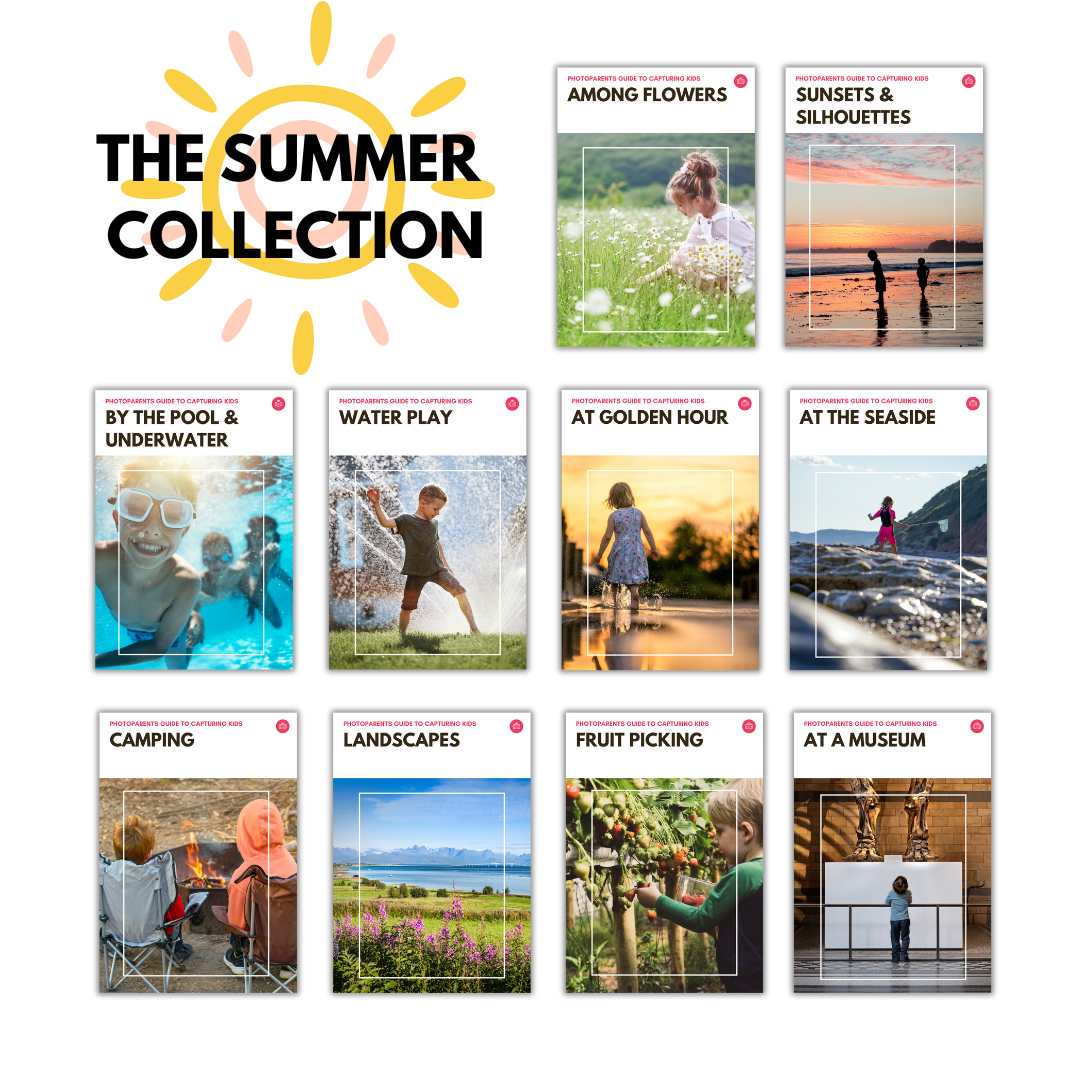
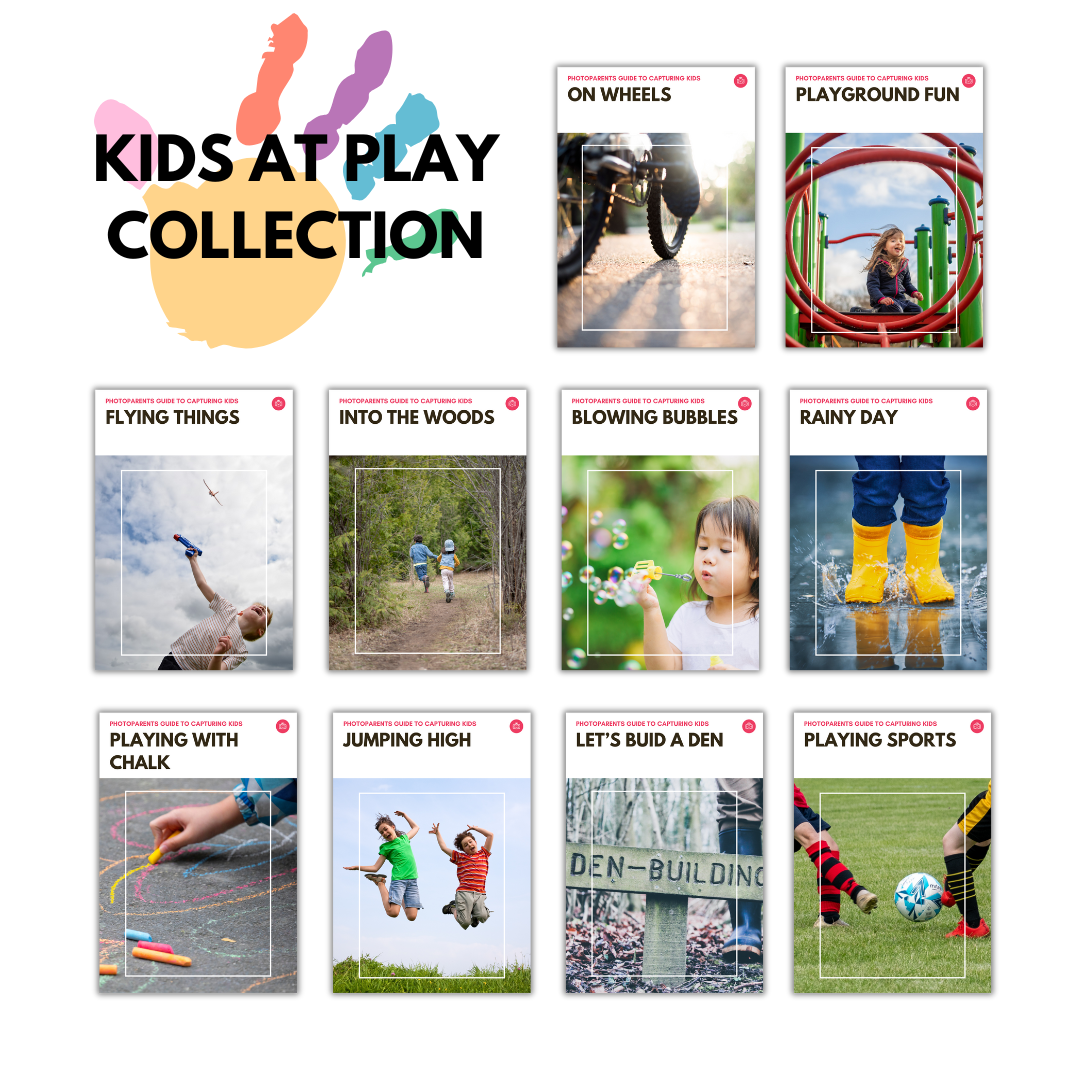
Week 3 challenge
Capture your kids at play! Think about framing it carefully and letting the kids lead the play!